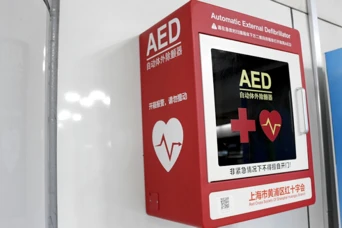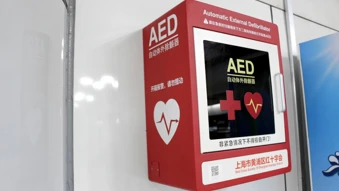CPR for dummies
Publication date
May 20, 2024
Lorem ipsum dolor sit amet consectetur. Bibendum adipiscing pulvinar morbi lectus nunc in sed iaculis platea. Volutpat ac et commodo at volutpat fames. Et consectetur ac porttitor lorem duis. Elit integer massa urna pretium sed scelerisque amet aliquet sed. Tincidunt urna malesuada massa adipiscing volutpat sit eget.

Step 1: Check for safety
Give 2 breaths:
Open the airway to a past-neutral position using the head-tilt/chin-lift technique
Pinch the nose shut, take a normal breath, and make complete seal over the person’s mouth with your mouth.
Ensure each breath lasts about 1 second and makes the chest rise; allow air to exit before giving the next breath
Step 1: Check for safety
Give 2 breaths:
Open the airway to a past-neutral position using the head-tilt/chin-lift technique
Pinch the nose shut, take a normal breath, and make complete seal over the person’s mouth with your mouth.
Ensure each breath lasts about 1 second and makes the chest rise; allow air to exit before giving the next breath
Step 1: Check for safety
Give 2 breaths:
Open the airway to a past-neutral position using the head-tilt/chin-lift technique
Pinch the nose shut, take a normal breath, and make complete seal over the person’s mouth with your mouth.
Ensure each breath lasts about 1 second and makes the chest rise; allow air to exit before giving the next breath

Lorem ipsum dolor sit amet consectetur. Sollicitudin proin diam.

Lorem ipsum dolor sit amet consectetur. Sollicitudin proin diam.

Lorem ipsum dolor sit amet consectetur. Sollicitudin proin diam.
Step 1: Check for safety
Give 2 breaths:
Open the airway to a past-neutral position using the head-tilt/chin-lift technique
Pinch the nose shut, take a normal breath, and make complete seal over the person’s mouth with your mouth.
Ensure each breath lasts about 1 second and makes the chest rise; allow air to exit before giving the next breath
Short summary
Step | What to do | Why it matters |
1. Make sure to check the scene and the person | Ensure the area is safe for you to approach. Tap the person and ask loudly, “Are you okay?” | You avoid putting yourself at risk and determine whether the person is responsive. |
2. Make sure to call for emergency help | If there's no response, call emergency services immediately or ask someone nearby to do it. | The sooner professionals are on their way, the better the person’s chances of survival. |
3. Make sure to open the airway and check for breathinglue | Tilt the head back, lift the chin, and look, listen, and feel for breathing for no more than 10 seconds. | This helps identify if the person needs CPR and ensures nothing is blocking the airway. |
4. Make sure to start chest compressions | Place your hands in the center of the chest. Push hard and fast — around 100–120 compressions per minute. | Compressions manually keep blood circulating to the brain and other vital organs. |




Get involved
Lorem ipsum dolor sit amet, consectetur adipiscing elit, sed do eiusmod tempor incididunt ut labore et dolore magna aliqua.
More ways to save lives
Lorem ipsum dolor sit amet consectetur. Phasellus eget tortor eget enim pellentesque ultricies neque tempus nec.
Lorem ipsum dolor sit amet consectetur. Phasellus eget tortor eget enim pellentesque ultricies neque tempus nec.
Lorem ipsum dolor sit amet consectetur. Phasellus eget tortor eget enim pellentesque ultricies neque tempus nec.